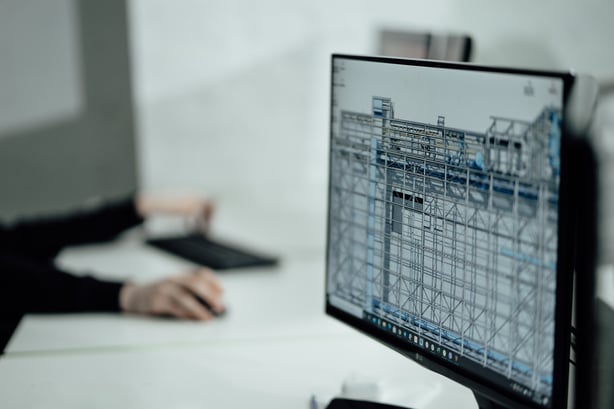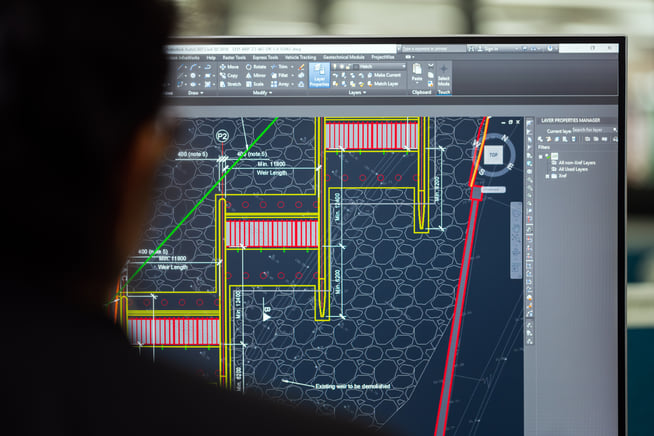10 Tips to creating the ultimate Revit Training Program

As my first piece of advice, the key to success in any training program is to balance and give importance to organization and methodology along with technical and practical training content.
Ideally, your staff training should be thought of as a program rather than an isolated one-time event. Your program should contain specific objectives that your training program aims to achieve.
For this reason, I’m dividing these ten tips into five generic ones (tips that apply to all training programs) and five specific to Revit.
1. Have a true commitment to your training program
Training is an investment in your team’s future, but it may take some convincing to get your program started. Quality over quantity is a rule to apply here. It is more valuable to have 60 minutes of mindfulness and commitment instead of 3 hours of distraction that everyone is just looking to get through. The first thing I recommend is to establish achievable short-term goals and thus work on frustration with small achievements in a timeline. Knowing what level of learning and key learning objectives I will tackle in a specific time frame helps me get excited to fight the resistance to change. It is human nature to fight consciously or even unconsciously and abandon ship at the slightest inconvenience.
A second recommendation to fulfill this commitment is to schedule well in advance. Establish your training program and make sure they are suitable for all interested parties. Put it at the top of your schedule, and don’t move it for anything. Choose the intermediate days of the week and, if possible, the first hours in the morning so that the daily emergencies do not tempt moving this already planned appointment. Mondays and Fridays are not recommended for training since Mondays are days of planning and catching up, and on Fridays, many employees arrive tired and eager to enter the weekend.
2. Face-to-face vs. Online: Our new reality
The pandemic brought changes in habits in all of our lives, one of remote work.
If employees have taken face-to-face classes their entire lives, it is normal to feel fearful at first. However, taking a Revit course online, as opposed to a face-to-face one, has significant advantages. Here are 3 of the main benefits of an online training program:
- Studying online gives you more flexibility and variety: you can record the classes and take them when you are available if we were unable to attend the coordinated schedule or if you want to review the subject from time to time that you want. (A survey by The Learning House announced that 44% of online students reported improvements in their employment status and 45% a salary increase.)
- Taking an online course also means that you don't have to travel to a place of study, which also means less time and transportation costs. For companies with distributed teams, this means your training budget can be more flexible and go further.
- Remote work allows you more than the public; you can combine conferences, debates, team workshops, and practical sessions. If the training meetings always follow the same pattern, the training will not have the expected effect. It also makes it possible to adjust the teaching method according to the age of the students or the specialty in question.

3. Innovate your methodology, creativity, and dynamism and leverage the power of remote work
Let's be honest: listening to a person speak monotonously while rolling through generic PowerPoint slides is quite tedious. Today, you have at your disposal many tools, platforms, examples, etc., to achieve dynamic and creative classes that capture the attention and enthusiasm of our students.
This training must do everything possible to enchant students with your discussion topics. This means as a trainer you must approach your classes with creativity and dynamism. Specifically, your training program should include participation and activities where students feel safe expressing their ideas and have fun learning. Discussions, games, and interactive platforms during the training are all great ideas, as long as they meet a specific objective.
4. Infrastructure - Ensure you have the right hardware and software
Revit is built for a specific system Windows 64 bit (not 32). If you have Mac users among your contingent you will need to think of a workaround such as a dual boot configuration which we don’t recommend. Linux use is even more difficult at the moment.
Revit uses enough resources on your system that you will need a powerful computer with at least 4GB of RAM and a processor that runs as quickly as possible. If you are unsure about system requirements I recommend looking at Autodesk’s webpage where all this information is available.
5. Encourage self-study - "Every day is a school day"
Each year Autodesk adds new features and functionality. Part of your training program should promote continuing education. There is a reason why professional organizations and certifications such as architecture, or your P.E. license requires continuing education. Standards bodies know that without constant exposure to new technologies and methodologies skills can atrophy. Above all, it applies to the BIM methodology (and any of its software) that is advancing and evolving daily. A good analogy is to compare it to learning a foreign language; If you don't do it for a while, you start to lose your vocabulary and fluency.
Once the formal training is finished Revit(focused on the BIM methodology), keep your users updated and involved. Ideas include joining webinars, listening to software talks, or attending conferences where users share news and resolve queries. You can also hold internal meetings or Lunch & Learns to share news or discoveries about new features, functionalities, or workflows your colleagues have developed. There is much to discover and learn, keep the flame alive and create a culture of being self-taught and above all: sharing knowledge.
6. BIM -> "I" stands for information
Knowledge is power, and knowledge is gained through information. BIM is not just a 3d model or visualization, it is information at its core. In fact, the validity of a model is evaluated not so much by its appearance, but by how we manage the information contained within.
Working in a parametric environment is to utilize the information that the model contains. Our great objective, when we model, is to enrich the model with all the information necessary for its END USE. Another concept important to know before you start modeling is, so we will use this model and do not charge information more and waste time on details that will not add to its use. endIn Revit, as in many other software, if we don't put a clear limit we don't end up with the model anymore and it's important to understand that these models are alive, one can complete them according to the cycle and phases of the project, construction, and subsequent maintenance.
Keep in mind that all this information has to be connected to each other so that the modification of data must alter the result of those parameters that are related to each other. Or put another way, making a decision must influence or alter the outcome of other decisions.
The advice for this point is that all this information must be introduced with no improvised criteria to allow us to then remove or exploit effectively. This is why the first thing we have to learn and understand is about the parameterization of families, the basis of Revit.

7. Learning a new language: Native 3D design
As professionals in the AEC industry, it is natural to visualize in our minds the design of our works in 3D, the unnatural thing is to leverage them to create plans or 2D graphics as we used to do with a drafting table or software like AutoCAD. Revit has allowed us to change this frame of mind and design from the start in 3D.
Like I said before, learning Revit is similar to learning a new language. Reaching a level of day-to-day proficiency in any language often takes at least 3 years. We all know that learning a new language is a journey rather than a destination. However, with Revit, we need this process to go faster because it is a day-to-day tool we use for delivering work products. We are in this transition with two different visions:
- When you are working in a CAD environment, facing such a huge software can be at the beginning a little bleak. But it is precisely for this reason, for knowing traditional ways of working, that one guesses the enormous potential that this program has from the first moment. We find ourselves with the continuous comparison of the operation of AutoCAD vs Revit, it is necessary to transfer current knowledge to new ones and it is not always possible since with this BIM software comes a change in paradigm, workflows, and thinking. In short... speaking of Software "You have to erase what is already known to give way to what is new to learn." We cannot fail to comment on a great point in favor that this group normally has, which is the great knowledge on-site, construction systems, etc. so valuable to be able to make a good model in Revit.
- It is curious to see how the younger people work in a much more natural way in 3d environments Where information is updated in real-time. The younger one is, the easier is to learn new languages and new technologies.
In any case, whether you are one of the first or second, to master this tool you will need time, patience, and perseverance. It is convenient to plan and specialize, not wanting to learn everything, but to follow an orderly and disciplined process.
8. Create smart goals
A good tip is not to try to cover everything at once. Within Revit, there are three distinct disciplines: Architecture, Structure, and MEP (facilities). It is clear that it is not necessary to master them all, the basic features are common to all three.
In addition to these disciplines, we can specialize in different fields within them. For example, if our area of action is Architecture, we can specialize in a specific field, the one that best suits our work. Architects, for example, have to know how to make a curtain wall with precision, which an interior decorator does not.
So we return to the same criteria for defining the END USE of your BIM model. We must think beforehand and define with criteria what we are going to need to learn, what topics we need to cover for our daily work. Jack of all trades, master of none is a good saying here. You could spend years trying to cover all the subjects and will not be able to handle any with precision. Focus on a clear goal gives you results!
Also, it's really important to always stay updated to Revit's latest versions, because it's constantly developing and adding new features and functionalities.
9. Fundamentals - "The order within the parts and in the order of the whole is a way of proposing our buildings" - Alejandro de la Sota
Another issue that may be initially difficult with Revit is assimilating its fundamentals. Although undoubtedly you are a huge qualitative leap in functionality, many people find it difficult to take the step. With Revit, you will develop unique models with a treasure trove of information. Although you will be able to visualize this model from a multitude of views, it is always the same. Any modifications you make to the model will be updated in all views and quantization tables.
A critical area to understand is knowing how the elements of the model are arranged in Revit. Like so many other things in life, they are ordered by hierarchies: Categories, families, Type, and Item.
You could say that the categories and families are the folders where the elements of the model are archived. In Revit, categories are what they are and therefore cannot be created or deleted. However, families can be as many as you want, and always ordered within a certain category.
In the types properties of your elements are described. That is why we speak of "type parameters" when creating a family. You must create a type included in each family.
Finally, the specimens are elements that are placed on your model and are equivalent to measurement lines. All instances of the model have their own instance parameters.
It should be noted that the management of views is based on exactly this same hierarchy.
For example, we are going to see the case of a system made up of a large-format brick with its respective finishes.
- The “Architecture” Discipline will be applied
- We would include it within the “Walls” Category
- To establish the Family, we would enter a much wider range
- To provide the uniqueness of our construction system, we will introduce all the information that we want it to show to the user by "Type" and "Item". Our construction system in the example allows us to divide different rooms in a more efficient way than another; that is why we must generate different Types, which show the user which is the correct option.
Once again our advice is to sit down and diagram this hierarchy, a good nomenclature for families, and a general order criterion to understand this key Revit foundation from the beginning.

10. Focus on the interface to get started
It is true that the Revit interface seems daunting at first glance. There is a lot of information available, and many buttons spread out on the screen. However, what initially disturbs us soon becomes our new routine work environment. It is important to cover interfaces in your initial training so that your users can quickly become familiar with the seemingly complex layout of buttons and tabs. Within the interface, we can differentiate the following main areas:
- Tabs: are where all the tools of the program are ordered according to the manufacturer's criteria. Within the tabs, there is a classification by groups that makes it easier for us to find the tools.
- Window Property: this is my greatest treasure. This is where you are going to extract the parameters, instance, and type from all the elements of the model, including your views. To work as a selector for families and categories.
- Project browser: The different elements of your project will be ordered in this window. In it, you will have available views, families, plans, tables, links, etc. All your information can be personalized in your order of preference.
- Area graph: this is where you will visualize your model. All the views of the project or projects that you have open will be arranged within this area.



